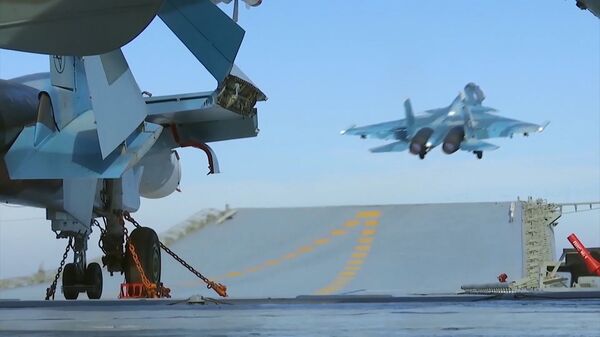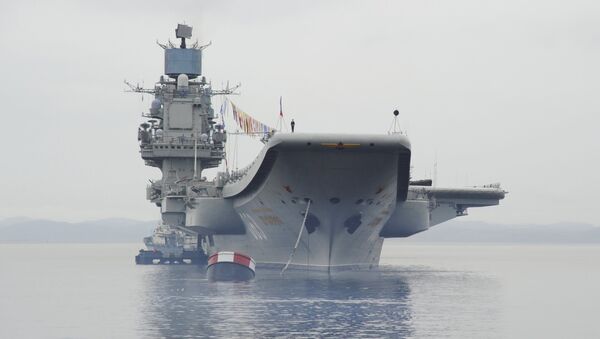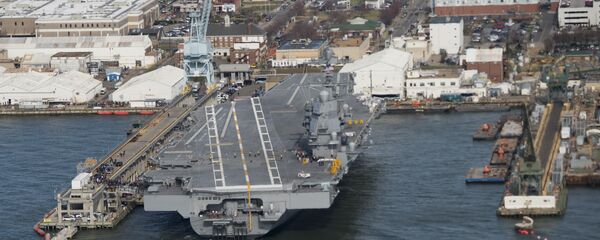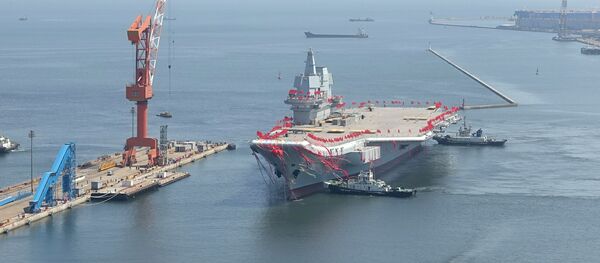In his article, Farley wrote that "poor construction or shoddy maintenance" made it hard for the Russian Navy to keep the Admiral Kuznetsov serviceable, or to "make a meaningful military contribution to Russia's security." Pointing to the carrier's long periods in repair and the loss of two planes to accidents during its mission in Syria, the observer argued that bringing the Kuznetsov up to the standards of its Chinese cousins "would likely require more investment than Russia is currently prepared to make."
But is the Kuznetsov really as bad as Farley makes out? Not by a long shot, military observer Vasily Kashin says. According to the expert, the ship's poor reputation comes down in large part to the kinds of negative publications about it in Russia itself.
"In many ways, the Kuznetsov became the victim of prejudiced attitudes toward the ocean-going surface fleet as a whole," Kashin explained. "Russia has a large collection of publicists and experts who believe that specificities of Russian geography mean that the country shouldn't spend too much on the fleet. For these authors, the Kuznetsov is a favorite target for criticism."
For Western authors, another issue is at play, the expert added, namely "the general negative attitude toward Russia and its armed forces. In the current climate of enmity, any shortcomings are often inflated to unimaginable proportions."

The facts say otherwise, Kashin noted. For one thing, the Kuznetsov proved to be a very useful ship, "allowing Russia to build up a reserve of carrier-based pilots in the difficult conditions of the 90s and early 2000s."
"In the 2000s and early 2010s, on the basis of the old Soviet carrier Admiral Gorshkov, Russia built the Vikramaditya for the Indian Navy," Kashin recalled. "Russia received over $5 billion for the ship alone. The Indians also bought Russian MiG-29K and MiG-29KUB fighter jets, as well as the services and equipment for the construction of another carrier in India itself."
No Offense
Admittedly, the Admiral Kuznetsov is not as suitable for sustained interventions across in the globe as its Western carrier counterparts, the military expert observed. "It was built on the basis of another military doctrine. Its task was to defend the areas patrolled nuclear missile submarines, and to prevent preemptive attacks against them. In this way, the ship was essentially a component in the defense of Soviet maritime nuclear forces. It's able of carrying heavy SU-33 fighters, has strong air defenses and is armed with 12 supersonic Granit cruise missiles with a range of 550 km apiece. With these weapons, an enemy would have a hard time making a breakthrough in the area the ship is defending."
At the same time, the experience of the Syrian campaign has proven that given new and modernized fighters, the Kuznetsov is perfectly able to be used for the kinds of 'expeditionary' campaigns so popular in Western carrier doctrine, Kashin added.
"Today, the Admiral Kuznetsov is capable of delivering accurate strikes with both conventional and guided ammunition, while the command center on the ship makes possible the coordination of the use of weapons at a high level," the observer noted.
As for the loss of the two fighters – a MiG-29K and Su-33, during the Syrian campaign in 2016, this seems to have been connected to the insufficient experience of personnel, not the carrier's technical characteristics, Kashin stressed. "And this isn't surprising, given that this was the first combat mission ever undertaken by a Russian carrier," he added.
"Notwithstanding certain design flaws, the Admiral Kuznetsov remains a useful and effective vessel from the perspective of combat, and is destined to have a long and successful service life. The Russian Navy has much to be proud of with this ship, and of the heroic efforts of those who maintained it during the difficult economic conditions of the 1990s," Kashin concluded.
The Admiral Kuznetsov took part in Russia's military operation in Syria in support of that country's efforts against jihadist militants. Arriving off the Syrian coast in November 2016, carrier aviation conducted airstrikes against Daesh* and al-Nusra* targets in the regions of Idlib and Homs. The Kuznetsov completed its mission in January 2017 and returned home, with the Syrian experience taken into account in a three year modernization program. Once modernization is completed, the Admiral Kuznetsov's service life will be extended by 25 years.
* Terrorist groups outlawed in Russia.







